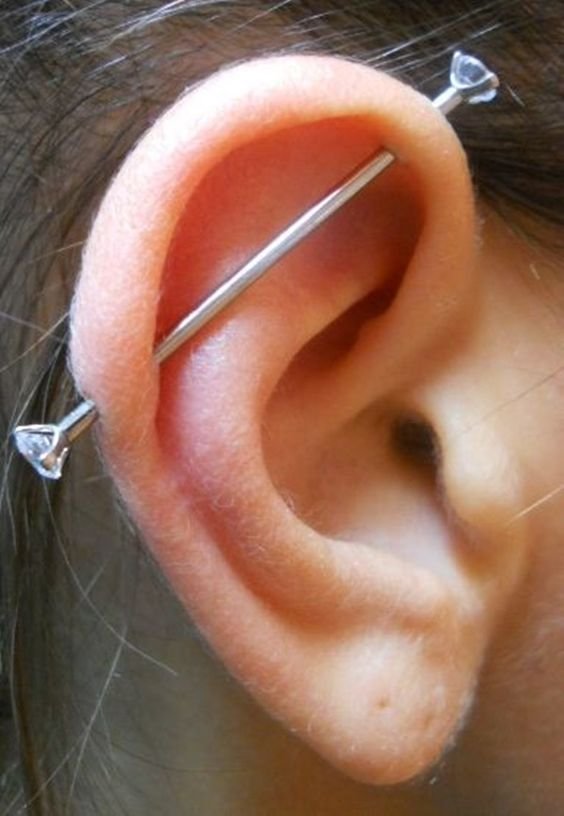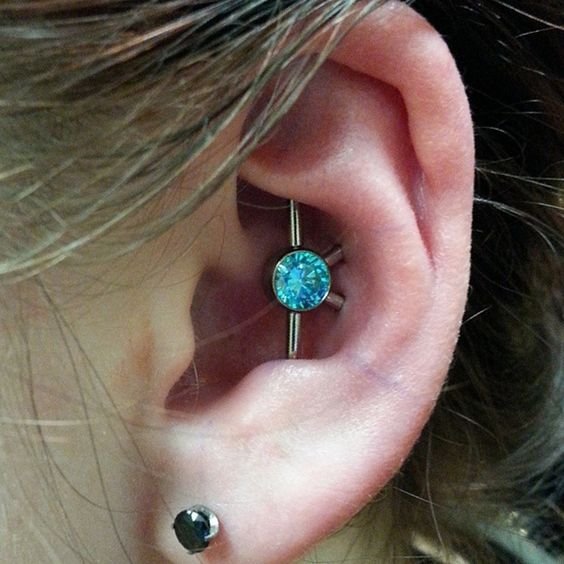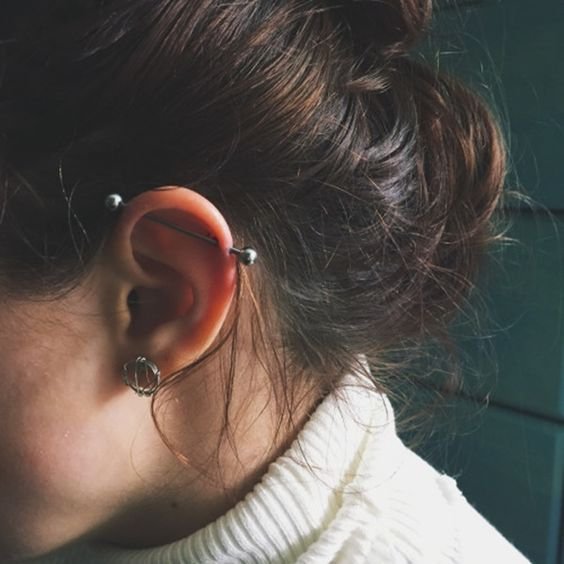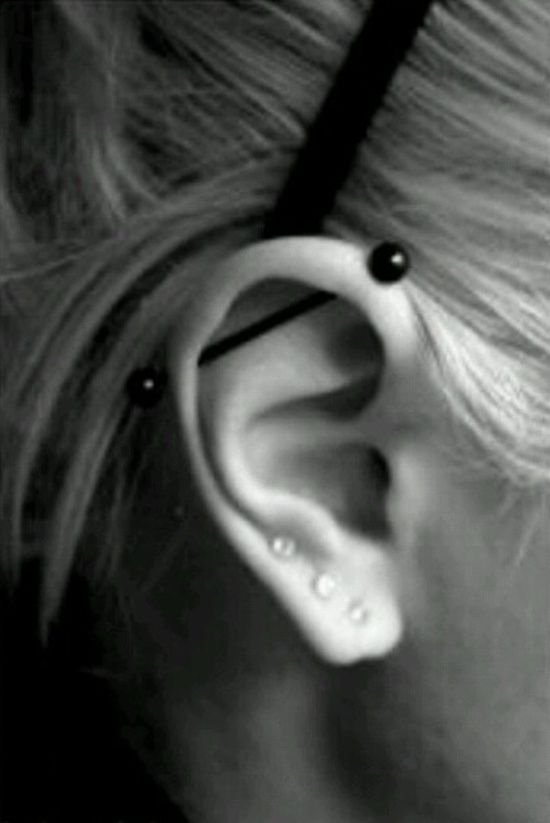A Comprehensive Guide to Industrial Piercings
Updated: September 15, 2023
Whether you’re a piercing aficionado or someone who's just beginning to explore the world of body modifications, industrial piercings stand out as one of the more striking and unique choices. This guide is designed to walk you through everything you need to know about industrial piercings, from what they are, to aftercare, to the styles available.
Source: PinterestWhat is an Industrial Piercing?
An industrial piercing consists of two separate rim (helix) piercings connected by a single straight barbell. It typically spans across the upper ear, from the front helix (closer to the face) to the back helix. However, it's worth noting that there are various placements and styles within the 'industrial' category.
The Piercing Process
1. Consultation: Before getting pierced, a piercer will discuss the procedure, potential risks, and jewelry options. This is the perfect time to ask any questions.
2. Placement and Marking: Once you've decided to go ahead, your piercer will clean your ear and mark the entry and exit points for the piercings.
3. Piercing: A sterilized needle is used for each piercing. Typically, one hole is pierced at a time, with the jewelry following immediately. The process might vary slightly depending on the piercer's technique and the anatomy of your ear.
4. Jewelry Insertion: The straight barbell is then inserted through the first hole and out the second.
Healing and Aftercare
Industrial piercings generally take longer to heal than other types due to their double-puncture nature. Healing times can range from 2 months to a year or more. Here's what you need to keep in mind during the healing process:
Cleaning: Use a saline solution to clean the piercing twice a day. Avoid using alcohol or hydrogen peroxide, as these can be too harsh and delay healing.
Avoid Touching: Minimize touching your piercing. If you must touch it, always wash your hands first.
Sleeping: Be careful when sleeping; try not to put direct pressure on the pierced ear. Using a travel pillow can help keep the pressure off.
Hair Care: Keep hair away from the piercing to avoid snagging or introducing bacteria.
Bumps and Swelling: It's not uncommon for bumps or keloids to form. If they persist or worsen, consult your piercer or a doctor.
Changing the Jewelry: Wait until the piercing is fully healed before changing the jewelry.
Jewelry Styles and Materials
While the traditional industrial piercing uses a straight barbell, there are various styles and decorative barbells you can explore once healed. Some options include:
Shapes: Besides the straight barbell, there are also arrow, spiral, and waved barbells.
Decorative Elements: Think of gemstones, charms, or even chains linking two separate piercings.
Materials: Surgical steel is a common choice, but titanium, niobium, and gold are also excellent hypoallergenic options.
Risks and Complications
As with any piercing, there's a risk of infection or complications. Some potential issues include:
Migration: This is when the piercing moves from its original location.
Rejection: This is when the body pushes the jewelry out of the skin.
Infection: Redness, swelling, and pus are signs of an infection. If suspected, see a doctor.
Scarring: This can occur if the piercing is traumatized or infected.
Conclusion
Industrial piercings are a bold and unique statement in the world of body modifications. Like any piercing, it's essential to be informed and take proper care of it during the healing process. If you're considering getting an industrial piercing or have more questions, come visit us at [Your Studio's Name]. We’re here to help you on your piercing journey!



